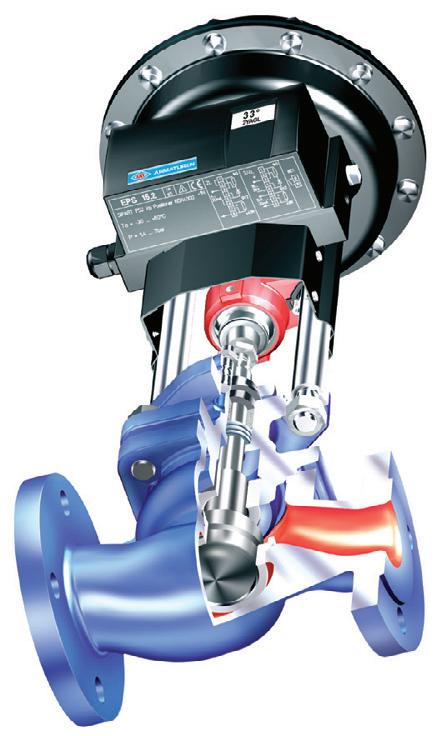
23 minute read
Desserts that can compute their own flavours

Desserts
that can compute their own flavours
A basic Logic Bonbon is filled with two flavours.
An interesting new research project from Monash University is creating a ‘cyber’ food experience that combines logic operations — the basic building blocks of every digital computer — with edible materials, resulting in the creation of a liquid-centred dessert.
The Logic Bonbon system includes a pre-made hollow bonbon with the option of three different ‘logic gates’ that allow the flow of flavoured liquids into the bonbon.
Users can introduce different liquids into the bonbon simultaneously and the bonbon is filled with different flavour and colour combinations depending on which ‘logic gate’ was used. The Bonbon also has a transparent top layer which allows the users to see their final results.
Food designer turned human-computer interaction researcher, lead author Jialin Deng, from the Faculty of Information Technology’s Exertion Games Lab, said the idea behind the development of the Logic Bonbon was to use food itself as an integral part of the computational operation.
“Over the course of three months, we tested the system with 10 participants, allowing them to sense, experiment and ‘play’ with the Logic Bonbons, filling it with different flavour combinations which they could consume,” Deng said.
“Through their interactions with the Logic Bonbons, the participants tangibly experience and learn about logic operations and are essentially creating a mini edible computer that requires an input, performs computation and results in different combinations of outputs while displaying different emoticons and flavours, allowing to the user to experience what computation ‘tastes’ like.”
Co-author of the research, Exertions Games Lab Director Professor Florian ‘Floyd’ Mueller said the process of interacting with and understanding computation need not be restricted to linear methods.
“Through this project we are illustrating that even food materials and interacting with your meal can be a medium to introduce people to concepts of computer science,” Mueller said.
“It would be great to see this research applied and developed further by creators like chefs, food designers and gastronomists to introduce computational concepts in a fun multisensory way and deliver experiences where diners ‘execute’ the ‘software’ that the chef has programmed into their food.”
Possible future research building on this project will include developing more complex computational systems made of food to further explore how hospitality can be supported in delivering unique experiences to diners while supporting the chef’s craft and expertise.
The Logic Bonbon research findings were presented during the ACM CHI Conference on Human Factors in Computing Systems in New Orleans, USA.

Oterra acquires Akay Group

©stock.adobe.com/au/Евгения Мурашова
Natural colour supplier Oterra has acquired Akay Group, an Indian company that produces natural colours and nutraceutical ingredients.
The Kerala-based company employs 400 people and has four manufacturing sites in southern India. Akay and Oterra have had a long relationship, previously operating in joint partnership until the mid-2000s.
“We’re very happy to join the Oterra family,” said Dr Balu Maliakel, Managing Director, Akay. “We have a fond shared history that has left a significant imprint on our business understanding and culture, and we share many of the same values. I am very confident that Oterra’s innovative mindset will bring great value to Akay’s customers. In many ways, this is like a homecoming for us.”
Odd Erik Hansen, CEO, Oterra, said, “In recent years, Akay has successfully transitioned from a pure colours and flavours business to a leading science-backed botanical ingredients business. We both believe in bringing the best of nature to the world, and we’re happy to welcome the team at Akay to Oterra. We look forward to working together to serve our customers in the future.”
Culture range for plant-based meat alternatives
After launching its VEGA Culture Kit for dairy alternatives in 2021, Chr. Hansen is stepping into the meat alternatives arena with the VEGA SAFEPRO range — designed to help keep plant-based alternative proteins safe and fresh for longer.
The range consists of three cultures that can be applied alone or in combination to undergo fermentation, which helps stem the growth of yeast, mould and contaminants such as listeria.
Benefits include: helps to control the growth of unwanted lactic acid bacteria strains, pathogens, yeast and moulds; meets consumer demand for products with natural ingredients, potentially reducing overall sodium content in plant-based meat alternatives; contributes to a clean and fresh taste throughout shelf life; enhances the sustainability profile of food brands by reducing food waste.
The range is suitable for plant-based chicken strips or in cooked, ready-toeat products.
Chr. Hansen
www.chr-hansen.com
Recyclable materials for frozen food segment


Walki is introducing a range of different materials, including printed solutions, to suit the needs of the frozen food market with the aim of making the packaging fully recyclable in the paper stream.
WalkiEVO Seal and WalkiOpti Seal are recyclable paper-based packaging suitable for pillow pouches for frozen food. WalkiEVO Seal has a dispersion coating as a barrier against water vapour and grease while WalkiOpti Seal has an optimised PE-extrusion coating. Both are suitable for all kinds of frozen food such as vegetables, seafood and bakery products.
Lamibel MDO-PE is a film-based material for pillow pouches made of reverse printed MDO-film and solvent-free laminated with low-sealing LDPE. Thanks to the MDO technology, the film thickness is minimised while performance is maximised by replacing other sorts of materials such as PP- or PET-films. It is suitable for all types of packaging (doypack, flowpack, pouches, etc) as well as all kinds of frozen food like vegetables, sharp-edges seafood and bakery.
WalkiPack Tray is a board-based tray suitable for frozen ready-made meals, designed to replace aluminium, plastic or plasticcoated trays. The tray material is 100% PET-free and recyclable in the paper stream.
BJ Ball Papers
www.bjball.co.nz


Australian consumers want plantbased burgers to taste like beef but with better nutrition
Jie Ying Lee, Senior Strategic Marketing Manager, Plant-Based, Kerry APMEA and Catarina Rodrigues, Marketing Manager, Kerry Australia and New Zealand.
Research shows that Australia is the third fastest-growing market in the world for plantbased foods, and the local plant-based market is expected to reach A$3B by 2030.
Among Australian consumers, 55% are intending to eat more plant-based foods. Over in New Zealand, more than a third of consumers say they are eating less meat or none at all. People associate eating less meat and a wholesome, balanced diet with a longer, healthier life. In fact, 72% of Australian consumers believe a flexible diet that includes meat alternatives gives them more options to meet their health goals.
But while taste is the #1 reason people choose plant-based foods, 43% of Australian consumers say current offerings lack the taste and texture of meat, although 50% agree that food labelled as “plant-based” can be described as delicious.
All this shows that the plant-based market is dynamic and continues to evolve, with the region presenting an incredible opportunity for innovative, great tasting plant-based foods.
In Australia, the growing demand for innovation in plant-based burgers is fueled by flexitarians. As they consume both meat and meat alternatives, flexitarians are unwilling to compromise on flavour and expect plantbased products to deliver authenticity, and will not accept anything that tastes artificial.
According to Kerry’s latest research with over 1,500 consumers across four countries — US, UK, Australia and Brazil — to uncover sensory expectations around plant-based burgers, and cheese alternative slices (US and UK), Australians use beef burgers as the benchmark — they want something that can replicate the taste experience of a burger grilled on a BBQ or eaten in a restaurant. They also have higher taste expectations. For example, while bitter plant-based notes were rejected by all the markets researched, Australians were the most sensitive and least accepting of it and other artificial notes.
Succeeding in the plant-based burger space in Australia requires finding the right balance of sensory attributes that will capture consumer interest and elevate their taste experience. According to the study, Australians ranked texture as the most important. This is followed by flavour and aftertaste, cooking and cooked appearance, raw appearance, cooked aroma, and lastly, feel.

Meaty firmness, Great Texture
For Australians, flavour alone is not enough to achieve the ideal plant-based burger taste experience. Texture is the top priority, with 74% of Australian consumers expecting a burger with a meaty firmness to have great texture.
Their decision making is influenced by what they can feel in a bite. Kerry’s analysis shows that their texture journey begins from the moment they sink their teeth into the patty and break through the outer crisp, to the resistance they feel with each bite, how the patty is broken down to smaller pieces, how the oil and moisture are released, all the way to the clean after feel in their mouth.
As a result, they are looking for products with a firm outer (a result of charring) and a soft, succulent inner, which 70% of Australian consumers categorised as ‘caramelised on the outside and juicy on the inside’. However, it is a delicate balance as they are not in favour of plant-based burgers that are too crispy on the outside and too soft in the middle, as this suggests poor quality. The challenge and opportunity for manufacturers is to achieve a good variation in bite that can deliver both crisp and succulence.
A good balance of savoury and meaty
Consumers in Australia are looking for plantbased burgers that can replicate the charred, caramelised notes and savoury taste of a real beef burger, with 70% saying they are likely to buy a plant-based burger with ‘authentic chargrilled burger’ descriptions. Products with these descriptions are also perceived to be better with 76% of Australians saying they believe it to be delicious.
With beef burgers as their benchmark, it’s no surprise that plant-based products that can deliver on depth and complexity of flavour with a good balance between savoury and meaty do well in Australia. Consumers are looking for multiple notes in each bite, from meaty, slightly smoky, with subtle saltiness, slight pepper, and subtle herb notes, and cooked fat.
While Australians like complexity, they also prefer flavours to be natural with no synthetic or artificial notes. They find the bitterness, ‘cardboardness’ and beaniness usually present in plant-based products unappealing and also consider the chemical notes created from excessive masking a turn off.
Too much flavour can also put Australian consumers off as many products in the market overcompensate with added salt or sodium, resulting in a lingering after taste.

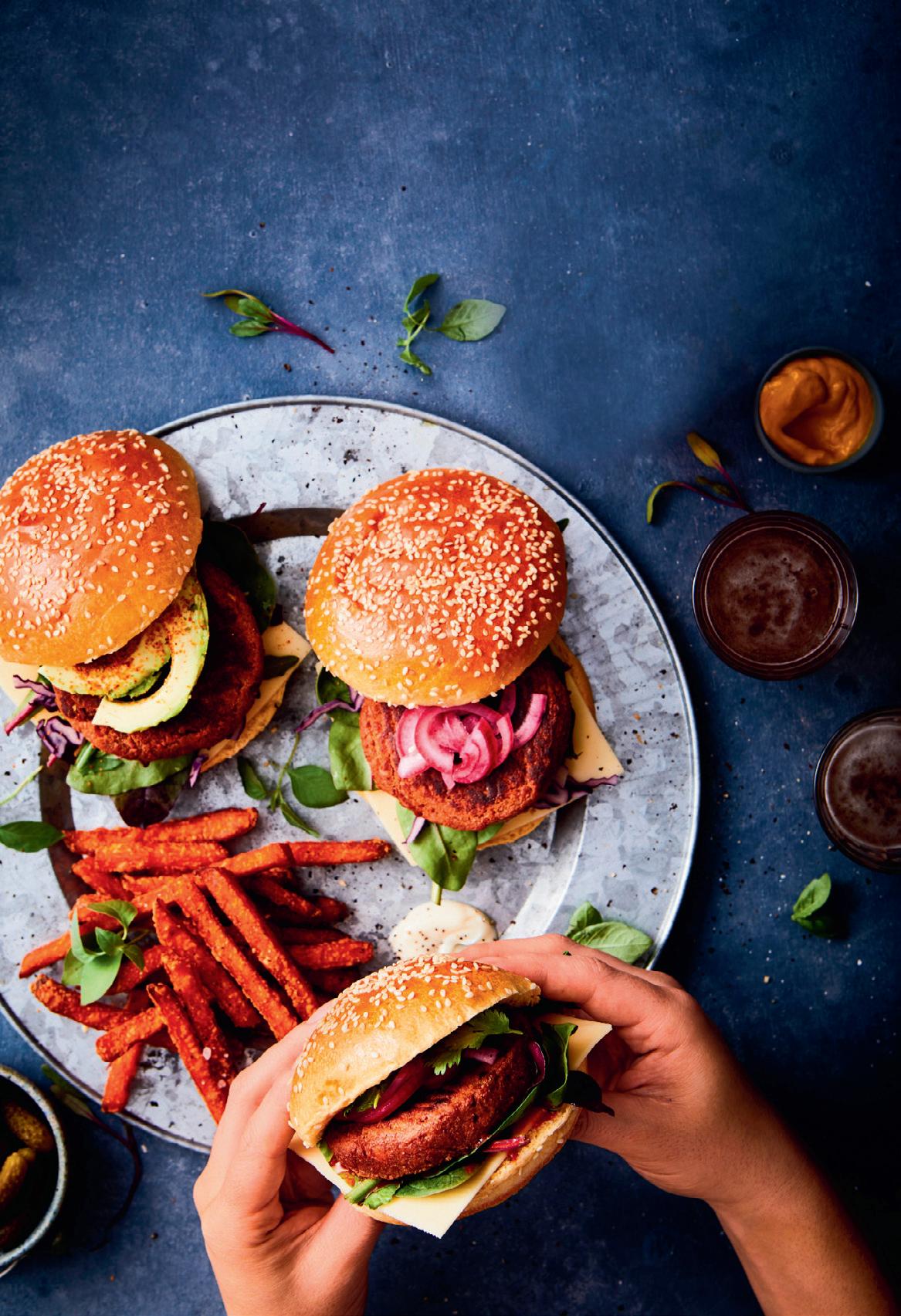
Visual and Sensory Appeal
Across all the four markets polled, overcooking is a common problem which leads to a poor eating experience. In Australia, in particular, the cooking process has a significant impact on the consumer’s overall satisfaction as it not only gives them visual cues as to when their food is cooked and safe to eat, it also adds an emotional element of excitement and anticipation.
The consumer journey begins even before they get to cooking. Australians prefer to have the pink tone of the raw meat to be muted and natural — they don’t want to see the visible fat globules and pink juices that mimic the bleeding in typical meat, citing it as ‘going too far’ in terms of replicating the overall meat experience.
Seeing the colour change from red to brown, and brown to charred or caramelised is the home run as it creates a perception that rich, deep flavours are developing. On the flip side, Australians do not like seeing visual cues that relate to overcooking such as the product burning, sticking to the pan and falling apart.
In addition, the Kerry study found that sensory cues, such as the aroma and sizzle sound that cooking produces, also help to enhance the cooking experience; 62% of consumers say increasing intensity of the aroma until it reaches meaty or smoky and the satisfying sizzle sound of a patty being cooked add to the drama in the pan, creating a positive expectation that the burger will be delicious.

www.kerrygroup.com

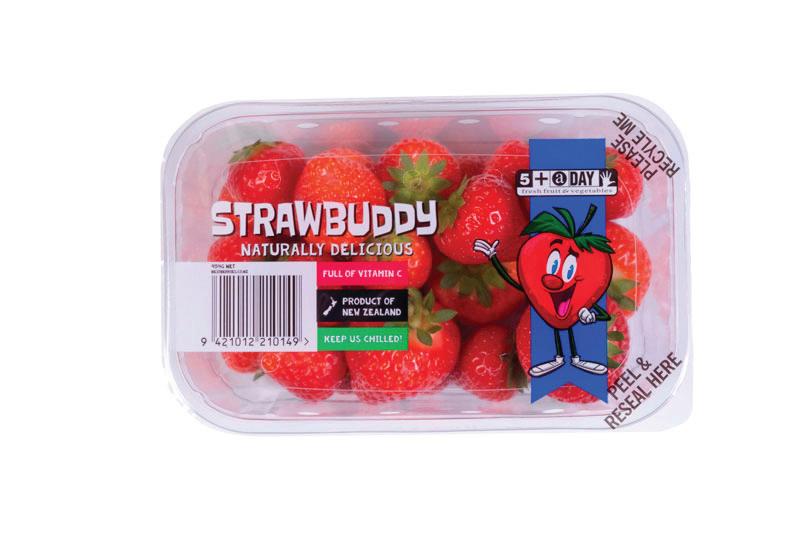
‘Berry-good’ resealable packaging with tamper-evident seal
New Zealand-based grower and supplier of fresh strawberries and raspberries Best Berries was searching for a packaging solution to match its requirements for supply to the New Zealand and overseas markets.
After an evaluation of its options, the company chose K-Reseal from global flexible packaging and lidding films supplier KM Packaging. The lidding film range can be repeatedly opened and resealed to the tray, and was a perfect match for all the requirements.
The NZ berry supplier required a fully printed reclose lidding film with macro ventilation holes for its APET 250 and 454 g punnets of strawberries. The punnets needed to have a tamper-evident seal from the point of packing through to the consumer first opening the pack.
The owner of Best Berries, Boman Zakari, said: “Our customers were interested in reclose lidding options. KM Packaging were able to provide the solution.”
The challenges
One of the challenges of this project was that Best Berries’ tray sealing machinery settings had no waste film allowance between each lid, on a four-across tooling layout.
Zakari said: “We were concerned about the tight tolerance on our sealing machine tool, but the team from KM advised on the settings and we had no issues.”
After the successful eye mark trial, KM supplied the fullyprinted order and shipped it by a combination of air and sea to coincide with the start of the picking season.
Best Berries is now able to offer its customers the security of tamper evidence along with the convenience of easy opening and reclose lid.
A solution with good shelf appeal
The lidding film offers the added advantage of being a mono laminate PET, which matches the tray, ensuring that the whole pack is designed for recyclability.
Zakari said: “Our customers are happy with the packing innovation. And it really looks great. It has been an excellent experience working with KM. The team are very helpful and try their best to provide solutions to any problems.”
The K-Reseal range is compatible with most tray sealing machines and is suitable for chilled and ambient storage.
It seals to rPET, APET and CPET trays, and options include mono-material, antifog and high barrier.
The range can incorporate print designs for improved pack presentation and shelf appeal. It can also include macro holes, hot needle or laser perforation for advanced packaging solutions making it suitable for products that need to respire.
Applications include multiple market sectors: fresh produce; meat, poultry, and seafood; bakery and desserts; dairy and cheese; and plant-based protein.
KM Packaging Services Ltd www.kmpackaging.com

Inductive sensor series
The Wenglor INTT Inductive Sensors for extreme temperature ranges from Treotham can detect metallic objects contactlessly at ambient temperatures of up to 250°C.
Suitable for the detection of baking trays in large bakeries, the sensors are designed to have a long service life of up to five years. If they need to be replaced due to mechanical damage, the series can be replaced in just one simple movement, even at high heat.
For dynamic applications in hot areas, system builders can now choose from flexible cables and simple push/pull connectors. The plug-in sensor heads are therefore easy to replace.
Another advantage is the expansion of the cable range, which now also includes an option for dynamic applications. Despite the high temperatures of up to 250°C, the new cables are flexible and therefore suitable for dynamic applications on lifting platforms or elevator systems with skid beams.
Other features include temperature range between –10 and +250°C and the large switching distances between 15 and 40 mm. The series can be parameterised via an IO-Link interface, and using the integrated weproTec technology, several sensors can be installed directly next to each other in the tightest of spaces without interfering with each other.
The sensors are used in particular in drying ovens in the automotive industry for precise positioning of skid beams. Inductive sensors are also suitable for extrusion of aluminium profiles, for the detection of goods carriers in the steel industry or, as mentioned earlier, for the detection of baking trays in large bakeries.
Treotham Automation Pty Ltd
www.treotham.com.au
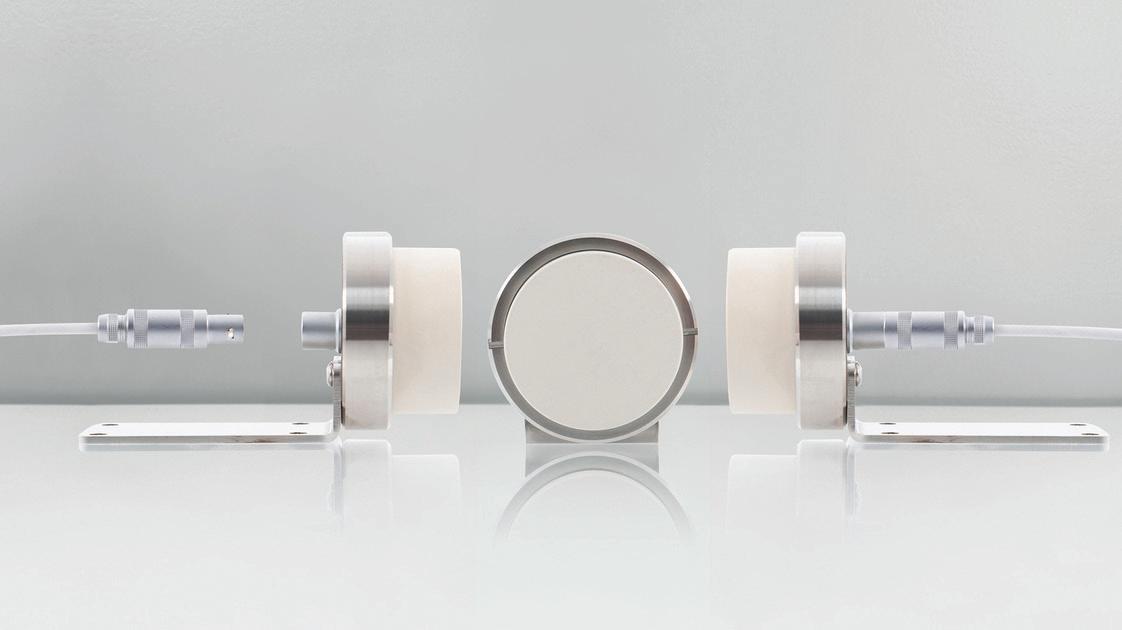



For All Your MAP Gases and Dry Ice Needs For Food Packaging


• SupaMap • Dry Ice • Carbon Dioxide • SupaMix

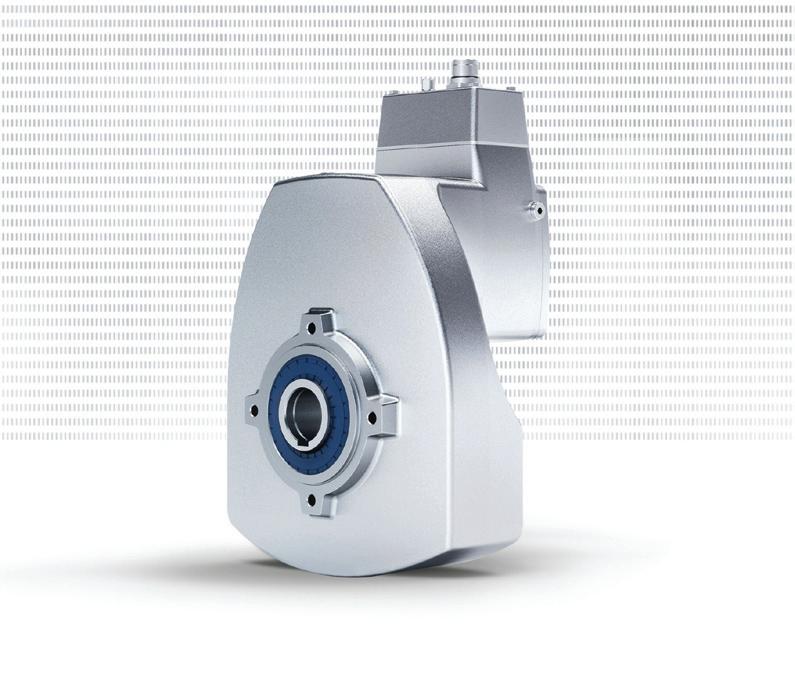
Refrigerant dryer
BOGE has converted its DS-2 refrigerant dryer in the lower power range to refrigerant R 513A. This has lower global warming potential than the refrigerant previously used but is designed to not compromise on performance in any way. The result is an energy-efficient dryer series with a low CO2 footprint.
In order to optimise the CO2 footprint of its refrigerant dryers, BOGE will be using a new refrigerant from December. From now on, it will be using refrigerant R 513A instead of R134a for its DS-2 series in the power range up to 10 m³/min. This is claimed to reduce the GWP value (Global Warming Potential) by around 60%: from 1430 to 573. The CO2 equivalent, ie, the impact the substance has on the climate compared to carbon dioxide, also decreases accordingly.
Another advantage of the DS-2 series is the refrigerant circuit is hermetically sealed. This means that the mandatory testing stipulated in F-Gas Regulation EU 517/2014 is not required.
Boge Compressors Ltd
www.boge.net.au

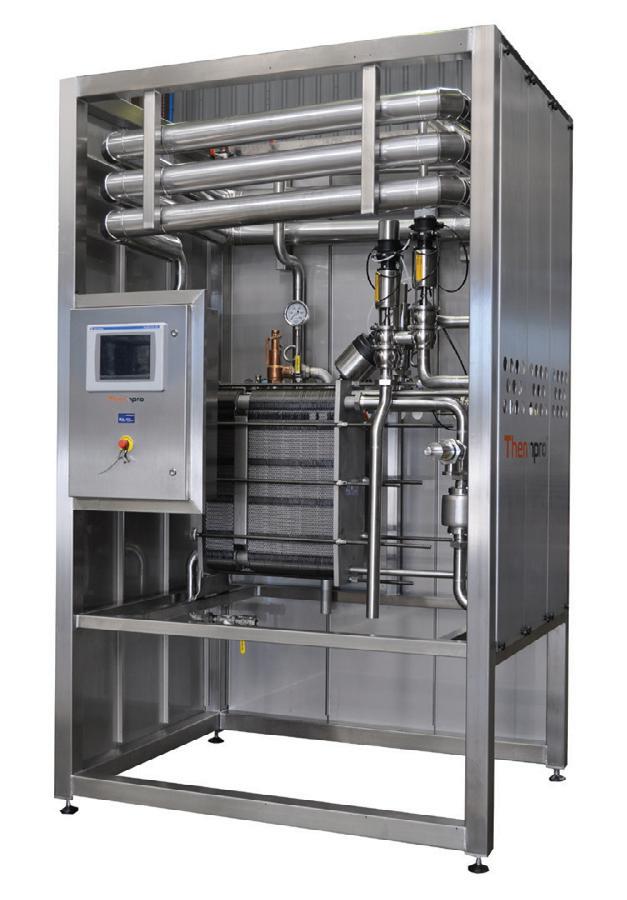
Integrated geared motor
The NORD DRIVESYSTEMS IE5+ synchronous motor energy-efficient drive system is suitable for the food industry and intralogistics. The high-efficiency IE5+ motor has now been integrated into a single-stage helical gear unit — thus further optimising system efficiency — and is also launched in the next size.
By installing the motor and the gear unit in one single housing, DuoDrive is lightweight and compact, coupled with very high power density. The DuoDrive geared motor features high system efficiency and a consistent version reduction paired with a smooth, unventilated and compact design. Elimination of many wearing parts results in lower maintenance. The new motor is now available in ventilated or smooth surface versions for powers from 1.1 to 4.0 kW with a continuous torque of 6.8 to 18.2 Nm.
DuoDrive is a NORD DRIVESYSTEMS integrated geared motor in hygienic washdown design where the IE5+ synchronous motor and the single-stage helical gear unit are installed in one single housing. As a system, the compact DuoDrive concept achieves a higher energy efficiency than the combination of IE5+ synchronous motor and NORDBLOC.1 bevel gear unit.
The first available DuoDrive size covers gear unit speed ratios of i = 3.24 to i = 16.2 and is designed for torque ranges of up to 80 Nm and speeds of up to 1000 min-1. As it is easy to clean, corrosion-resistant and washdown capable, DuoDrive is also suitable for use in hygiene-sensitive and harsh environments, and provides good system availability and lower cleaning costs through lower cleaning effort.
If required, the motors are provided with a smooth surface or the nsd tupH surface treatment. The IE5+ synchronous motors are available in two sizes with a smooth motor design suited for washdown applications in food and pharmaceutical industries.
In case of stringent requirements on surface and corrosion protection, nsd tupH surface treatment is the technology of choice. Thanks to a special method, the surface is made corrosion-resistant and harder and is claimed to make aluminium behave like stainless steel with regard to corrosion protection. This is not a coating, but a surface treatment that creates a protective layer which is permanently bonded to the substrate material so nothing can detach or flake off. The drives are easy to clean and largely resistant to acids and alkalis. It is even possible to use high-pressure cleaners or apply aggressive media. nsd tupH treatment is available for most of the aluminium products in the NORD modular drive system, and suitable for hygienically sensitive applications in the food sector.
Plate freezer for meat processing plant in Dubbo
MHM Automation has recently commissioned its 200th Milmeq plate freezer at Fletcher International Exports’ sheep meat processing plant in Dubbo, NSW. The project saw the installation of two new plate freezers at Fletcher International Exports’ Dubbo plant, each standing at 12 m high, with a capacity of 2560 cartons and the ability to completely freeze cartons of cold boned product in less than 24 hours. This installation brings the total number of Milmeq plate freezers installed for Fletcher International Exports across both its plants to 18, three of which feature the latest technology innovation, single station opening (SSO). The SSO plate freezer model was a collaborative development between Milmeq (now part of MHM Automation) and Fletcher International Exports, with the first commercial prototype being commissioned at Fletcher’s Dubbo processing site in 2015. The SSO mechanism allows products to be automatically loaded and unloaded one station at a time, keeping the remaining stations closed and product in those stations in contact with the plates to continue the freezing process. The SSO is designed to increase the effective refrigeration, to ensure regulatory compliance. The plate freezers are claimed to deliver savings of up to 30% over the blast freezing method traditionally used, and more than halve the time required to freeze cartons. Cartons frozen in the plate freezers have flat presentation, allowing 10% more cartons to be stacked, which can reduce shipping costs.
Completely automated loading and unloading operation, with integrated infeed and outfeed conveyors, can reduce manual labour and associated WHS risks with working in a frozen environment. MHM Automation mhmautomation.com/


Award winning source of ingredients
TransChem has been an award winning source of ingredients for over 25 years for nutraceuticals and pharmaceuticals.

Now the food & beverage sector can benefit from the premium value, quality natural ingredients that we independently source from around the globe. We know the value of key natural ingredients, which will enhance the health and wellness offering in your product. Contact us now to find out more about the difference we can make sourcing and distributing for you: +61 2 9887 1688 or visit transchem.com.au/food-beverages
SUITABLE FOR: DAIRY I BAKERY I CEREAL I VEGAN I SPORTS NUTRITION I BEVERAGES I CULINARY I SNACKS


McCain plant to generate power through food waste
McCain Foods’ Ballarat processing plant will soon be using food waste to generate its own power. The plant will be introducing equipment that takes solid and liquid byproducts from the manufacturing process and converts them into a renewable biogas for heat and electricity generation, in what the company is calling a closed-loop success story.
A cogeneration system is expected to reduce CO2 emissions by about 15,100 tonnes per year and will save 23,000 tonnes of waste — that’s around 1600 full garbage trucks.
“The electricity generated from this system is used to offset our reliance on the grid and the heat is used in our steam generation process to offset our reliance on natural gas,” said McCain Engineering Project Manager CO 2 Reduction Scott White.
“The way we approach reducing our CO2 emissions needs to be innovative, future-proof and work within a circular economy — and our team is leading the way to identify the best opportunities at each of our sites,” White said.
The technology will produce 9,640,000 kWh of electricity and 78,593 GWh of gas annually, reducing McCain Foods Ballarat’s reliance on the grid by 19%.
“This new approach also gives us the ability to optimise our total energy usage by being able to match the output of the system based on solar production, factory consumption and biogas generation.”
In addition to introducing the cogeneration system, the plant will also be constructing a solar car park in 2023 that will reduce emissions by a further 12,100 tonnes and produce enough electricity to power 4500 homes. More than 1100 solar panels will serve the 8.2 MW system, which will provide shaded car spaces and power to two electric vehicle charging ports. Energy consumption from the grid is expected to be reduced by 20% through the solar panels. McCain Foods (Aust) Pty Ltd www.mccainfoodservice.com.au


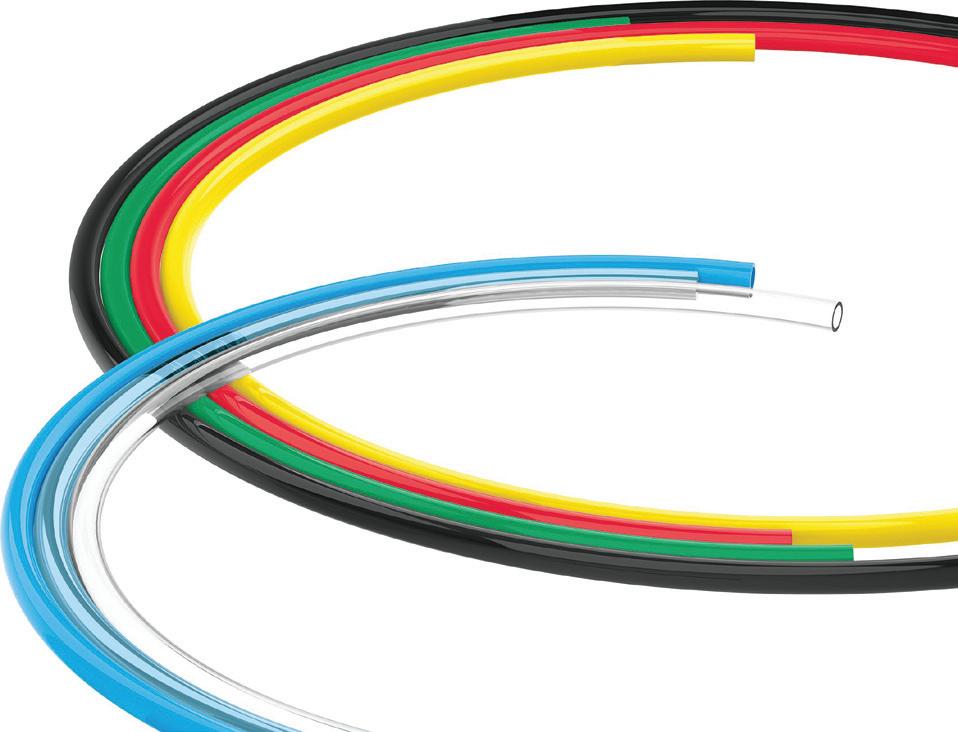
Food-compliant tubing/fitting combination
The PUN-H-F tubing and NPQR stainless-steel push-in fitting product combination from Festo is designed to ensure compliance with food safety requirements for manufacturers of food and packaging machines.
The PUN-H-F food-compliant tubing meets the standards for use in the food industry according to Regulation (EC) 1935/2004 and FDA 21 CFR 177.2600. Together with the NPQR fittings, it can be used in the food and packaging industry, particularly in places where it might come into contact with food.
The kink-resistant tubing is resistant to hydrolysis and microbes, making it suitable for environments with high moisture or with water at temperatures up to 60°C. The material used prevents hydrolytically induced cracking. The black version is especially UV-resistant and thus also suitable for use outside of enclosed buildings. The ‘natural’ colour variant is suitable for applications with gaseous oxygen as the operating medium.
The push-in fitting also complies with Regulation (EC) 1935/2004 and the materials are listed to FDA 21 CFR. It is additionally certified to NSF 169.
The large number of variants, threads and tubing sizes makes it suitable for many different applications. Assembly is easy and works by simply plugging and unplugging the tubing. Leaks are prevented by a chambered O-ring that is securely held in place. The food-compliant design reduces edges where dirt could collect. This makes the push-in fitting easy to clean.
In applications where fittings are subjected to intense heat, the NPQH metal fitting can be used, which is also food-compliant, heat-resistant up to 150°C and suitable for high pressures.
Festo Pty Ltd
www.festo.com.au

